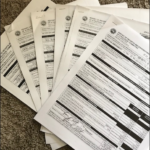![]() 02/12/14 Private landowners looking to improve wildlife habitat on their property may qualify for financial assistance through the DNR Division of Fish & Wildlife, particularly if they want to benefit bobwhite quail and ring-neck pheasants.
02/12/14 Private landowners looking to improve wildlife habitat on their property may qualify for financial assistance through the DNR Division of Fish & Wildlife, particularly if they want to benefit bobwhite quail and ring-neck pheasants.
Bobwhite quail and ring-neck pheasant are prized game birds. However, populations of both have suffered from permanent habitat loss or lack of maintenance on existing habitat.
“It used to be that farming practices created and maintained a lot of quail and pheasant habitat,” said Gary Langell, private lands program manager for DNR Fish & Wildlife. “More ground was typically disturbed each year than what was planted and harvested. Many of those disturbed areas would remain idle for two or three years and provided ideal nesting and winter cover. It is this type of habitat that we are lacking, but it requires landowners to create and maintain it.”
The DNR Fish & Wildlife’s Private Lands Unit works with landowners to restore such habitat. A district wildlife biologist will meet with the landowner, inspect the property and prepare a management plan. The biologist also will discuss financial assistance programs through DNR Fish & Wildlife to help offset the cost of habitat restoration or maintenance. Qualified landowners are reimbursed in the amount agreed to by the DNR Fish & Wildlife. Enhanced cost-share assistance is available to landowners in any of the Division’s quail or pheasant priority areas.
“Each district wildlife biologist has a quail or pheasant priority area,” said Josh Griffin, south region private lands supervisor for DNR Fish & Wildlife. “The more pheasant and quail habitat we can create or restore in these areas, the greater the potential for these birds to disburse into other areas of good habitat and maintain sustainable populations.”
To determine if your land is in a quail or pheasant priority area, see dnr.IN.gov/fishwild/2352.htm. For more information on quail or pheasant priority areas, or for information on developing wildlife habitat on your property, contact your local district wildlife biologist. A directory for district wildlife biologists is at dnr.IN.gov/fishwild/2716.htm.














